In continuing with the travel insanity that was February, immediately after the coffee region and Popayán / Tierradentro / Tatacoa Desert, I was off to La Guajira with a couple of Fulbright friends and a couple of friends from college.
A Northeast peninsula bordering Venezuela, La Guajira is far and away the most remote place I’ve ever been. We drove for hours without roads or streetlights, bouncing across ever-changing terrain in our SUV. We drove over cactuses, the desert’s cracked earth, sand dunes, and on the Caribbean sand.
As half of our group got bed bugs and everyone in our group got some sort of stomach illness, it was not the most luxurious trip in the world. I also wouldn’t suggest the trip to people who get car sick easily. As I mentioned before, there were no roads and about 6 hours of driving per day. Categorizing this car ride as “bumpy” is an understatement. But if you have a good attitude, don’t mind a lack of running water and/or spotty electricity, and want to see a totally distinct area of Colombia, La Guajira may be for you.
Day #1
Our group spent that Friday night at a cute hostel, Bona Vida Hostel, in Riohacha, a small town and the gateway to La Guajira. As with all Friday nights in Riohacha during the month of February, we happened to be in the coastal city for their weekly “Pre-Carnaval” parade.
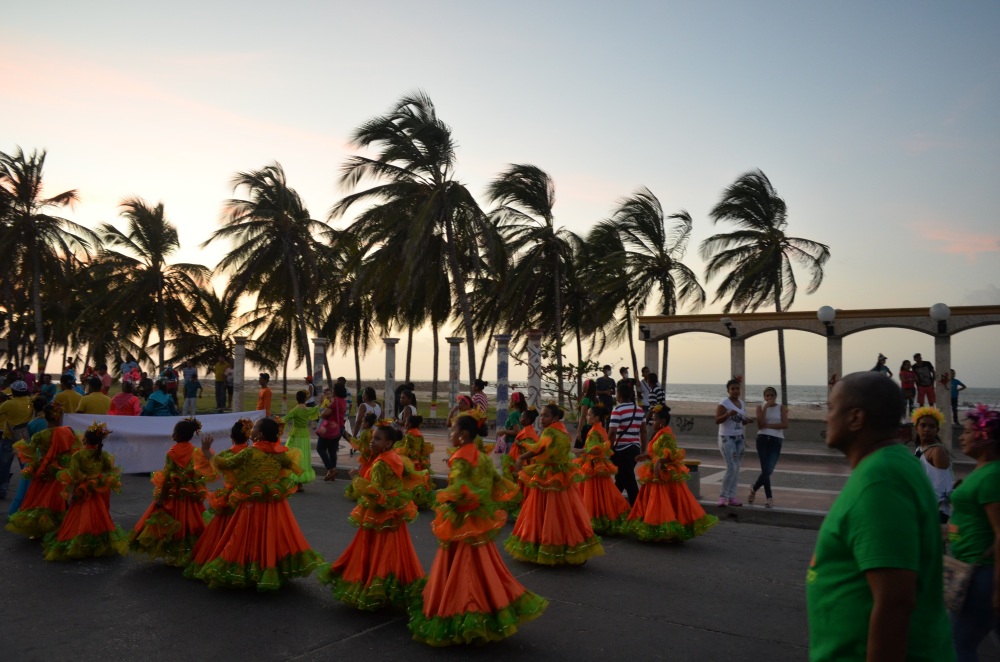
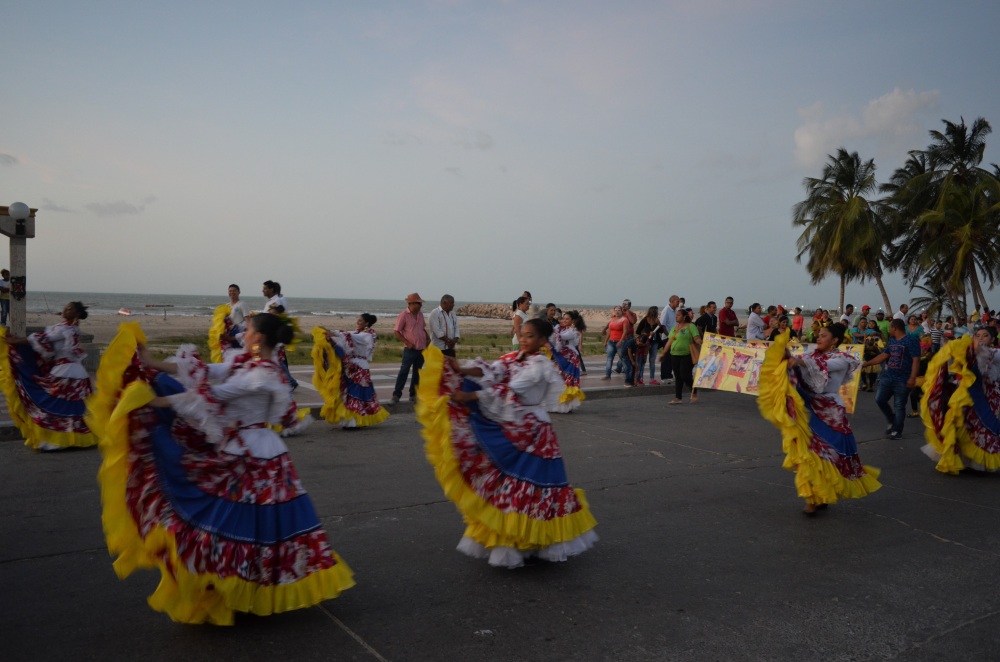
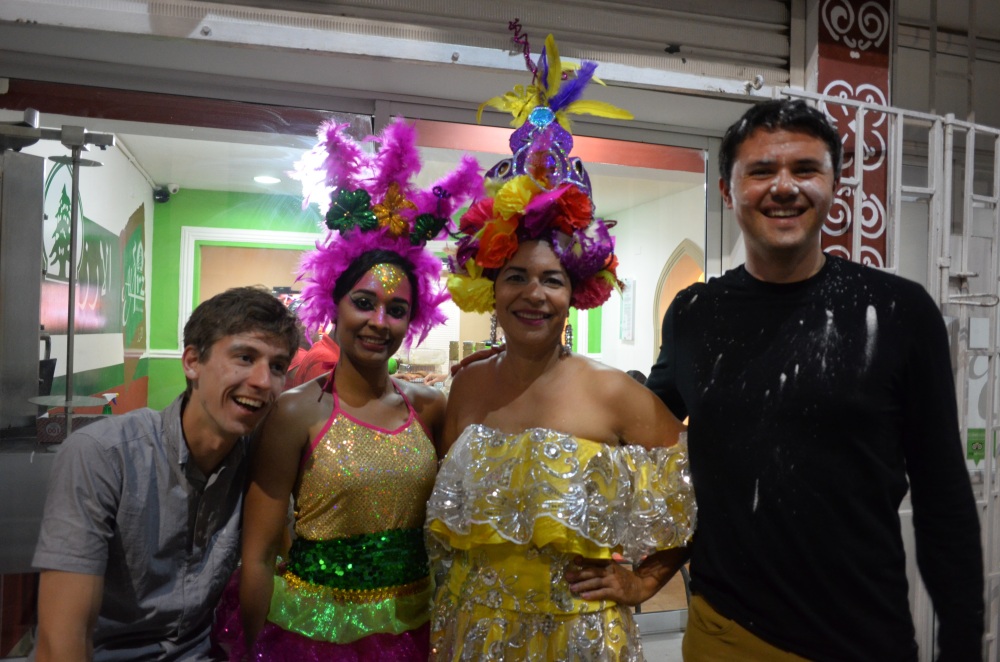
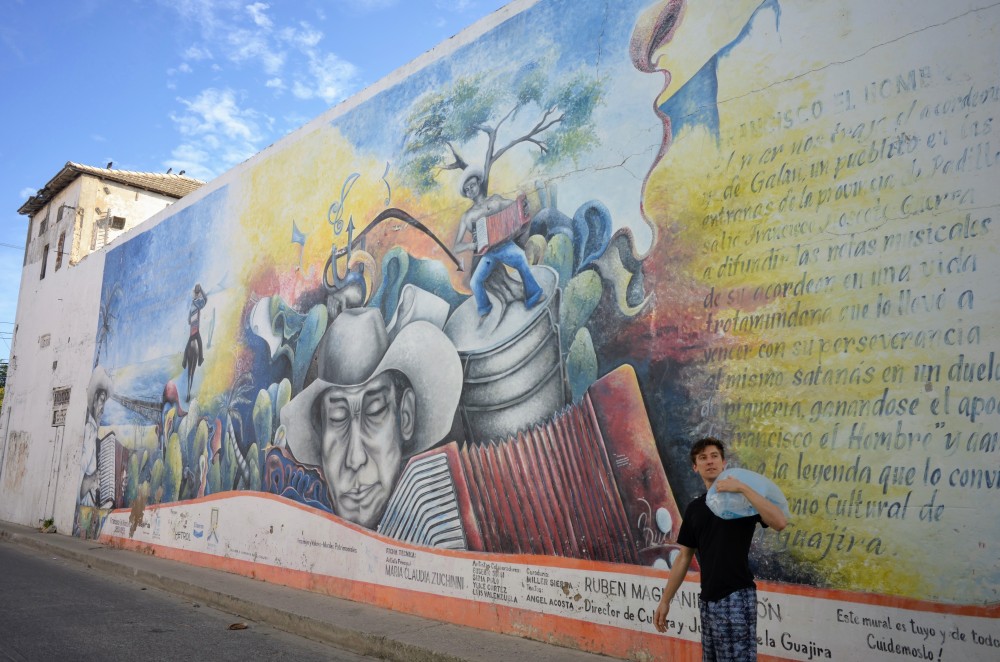
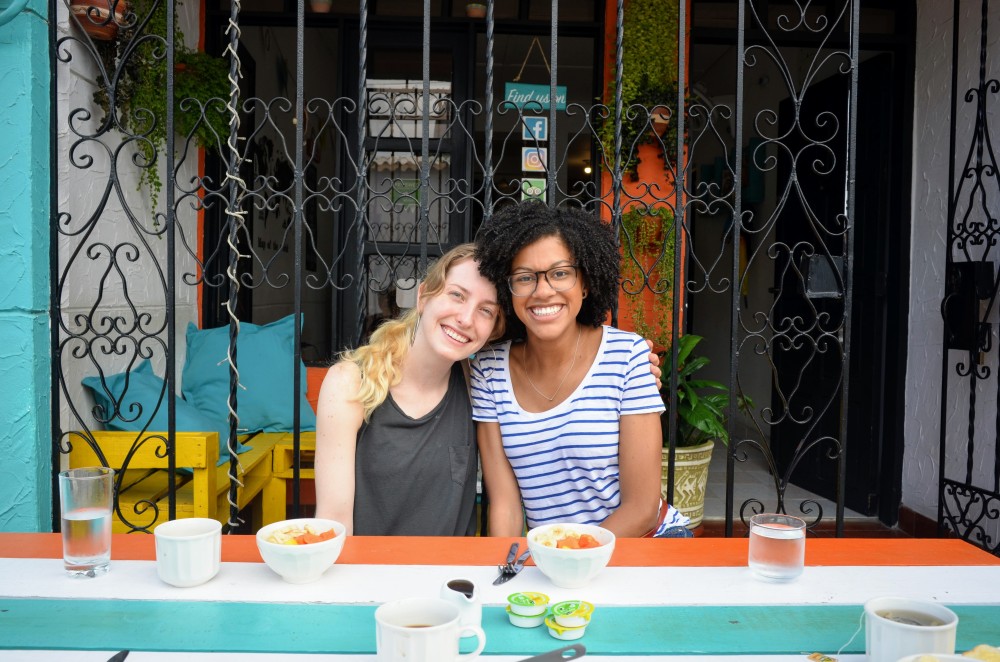
Day #2
The next morning, we were up early for our free (!) pancake breakfast and to be picked up by our tour guide for the weekend. Our group decided to go with Kai EcoTravel for their 3 day/2 night tour of Cabo de la Vela and Punta Gallinas. It was just the five of us and our driver/guide in the car for the weekend, but at times, we’d caravan through some of the most remote regions with other Kai EcoTravel tour groups. Because we were sometimes 5ish hours from the nearest town, we were our own AAA and car repair (LOL @that time in Tierradentro when I thought being two hours from a bank/ATM was remote).
We made our way through Uribia, the indigenous capital of Colombia, and the town where our guide, Luis, lives.
It was also in Uribia, the last major town before the more remote locations in La Guajira, that we were advised by Luis to buy packs of water and snacks for the children we’d encounter. We had heard about the poverty in La Guajira before embarking on our flight to Riohacha; yet even still, we underestimated the number of hungry children we’d encounter living hours by car from grocery stores and government assistance. But, more on that later.
During that first full afternoon, we made our way to some of Colombia’s salt flats and Cabo de la Vela. It was at the salt flats that we encountered a ton of kids who had a million questions about where our group was from and, of course, my curly hair. It felt a bit like a press conference (but en español, claro):
Kids: Is your hair naturally like that?
Me: Yes.
Kids: Do you have to curl each strand every morning?
Me: Nope.
Kids: *Hands in my hair*
Me: Gentle! Gentle! Remember, it’s attached to my head!
Kids: Are you from Africa?
Me: Not really
Kids: Are you related to that soccer player? The one with the hair?
Random Passerby: Yes, she is!
Then, we were onto Cabo de la Vela and El Pilón de Azúcar, a beautiful tourist spot and windy mini-hike. We walked around, hung out for a bit, and watched the sunset in that area. Before it got too dark, we made our way to our hostel for dinner. After, we went to one of the only other hostels in the area for some beers.
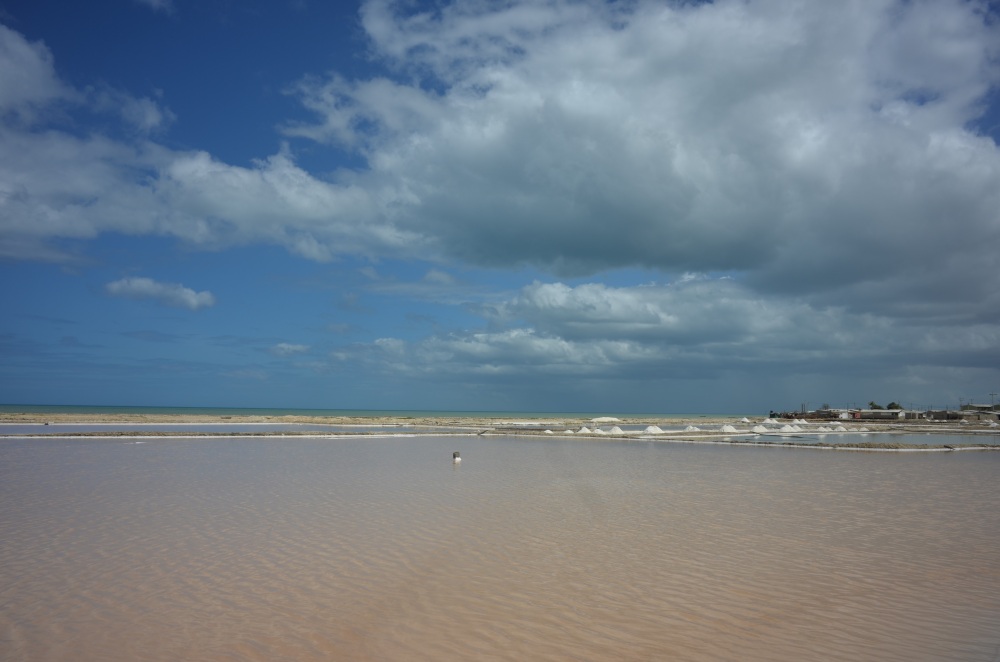
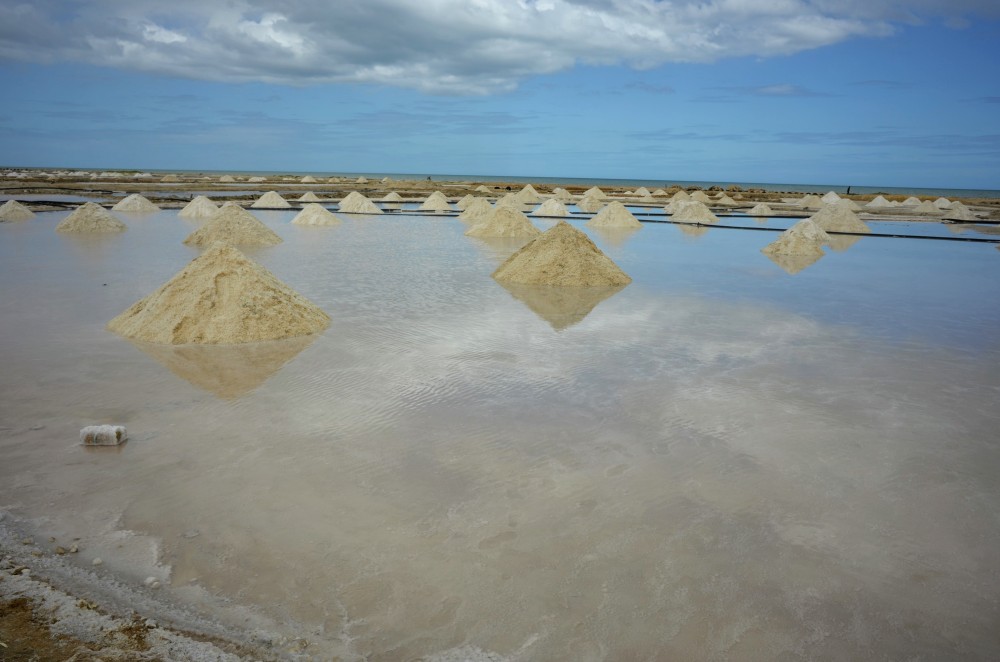
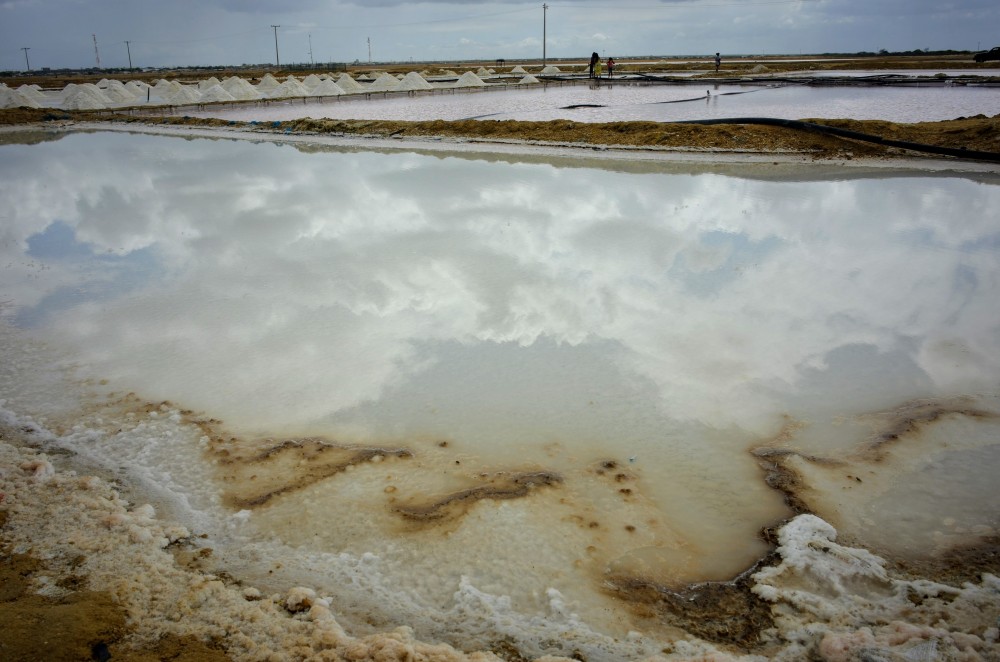
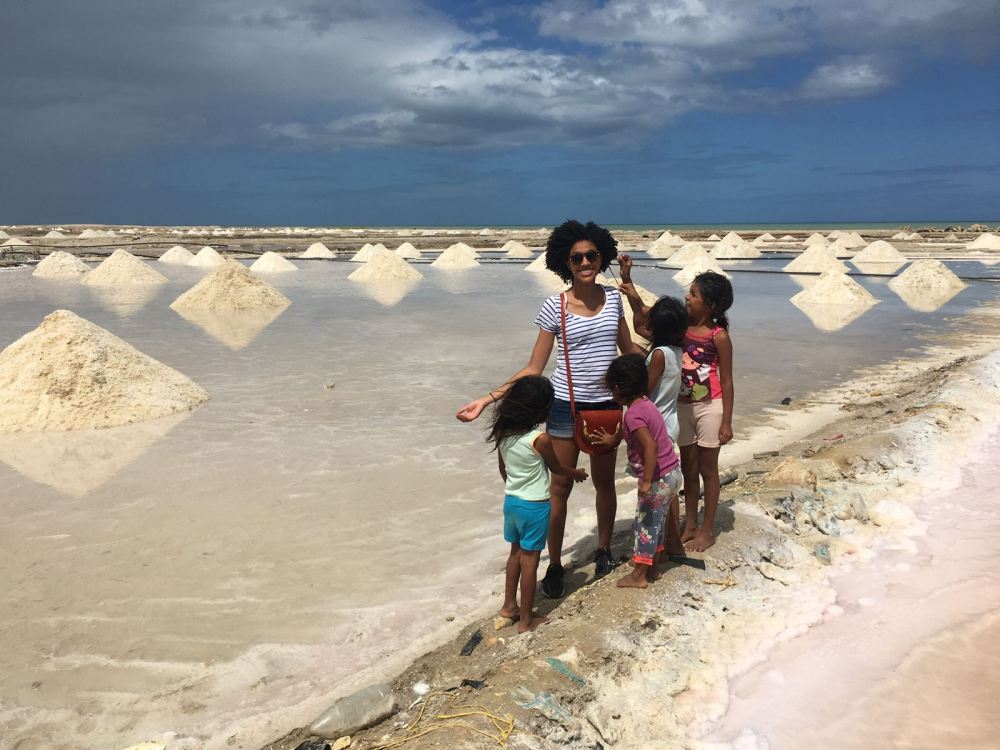
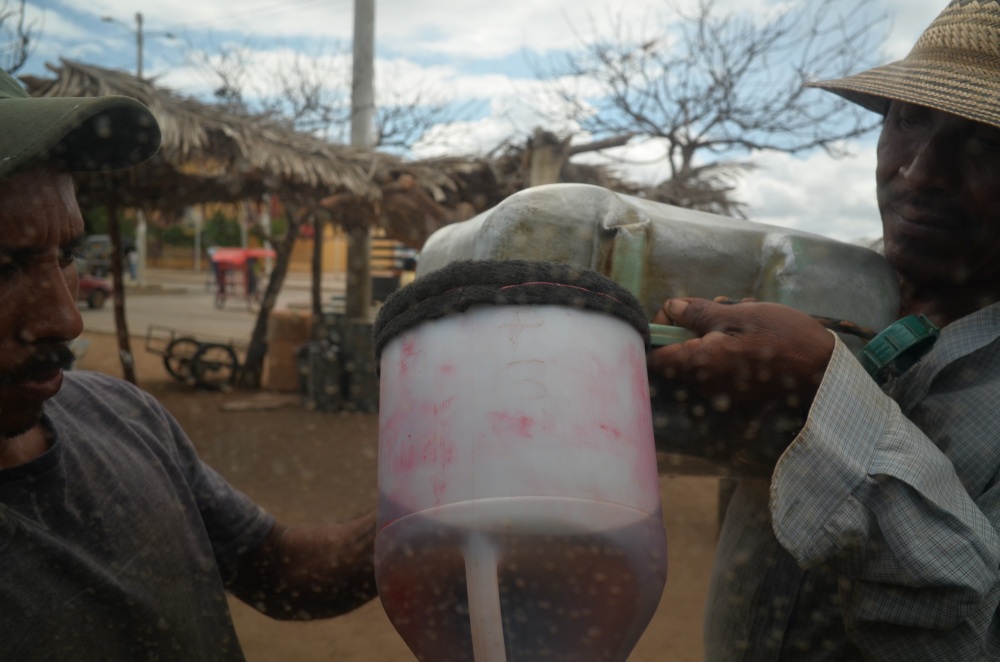
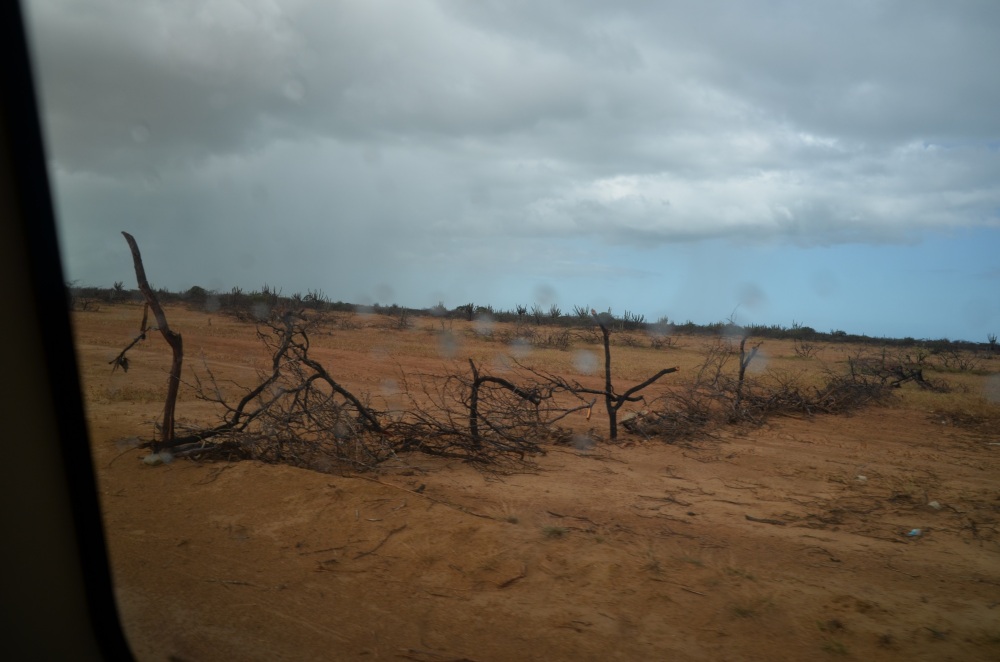
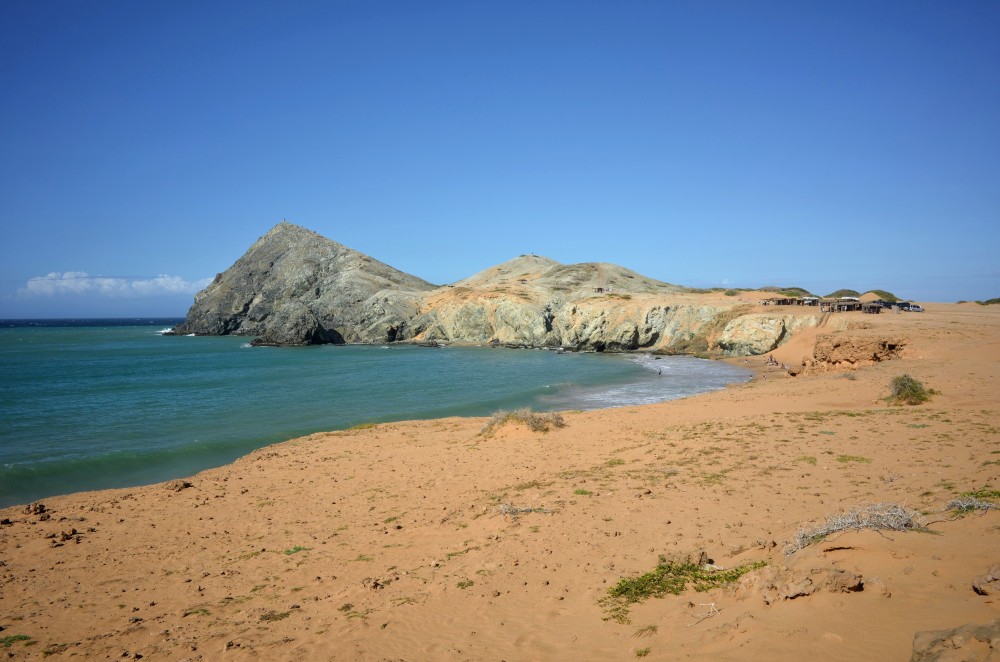
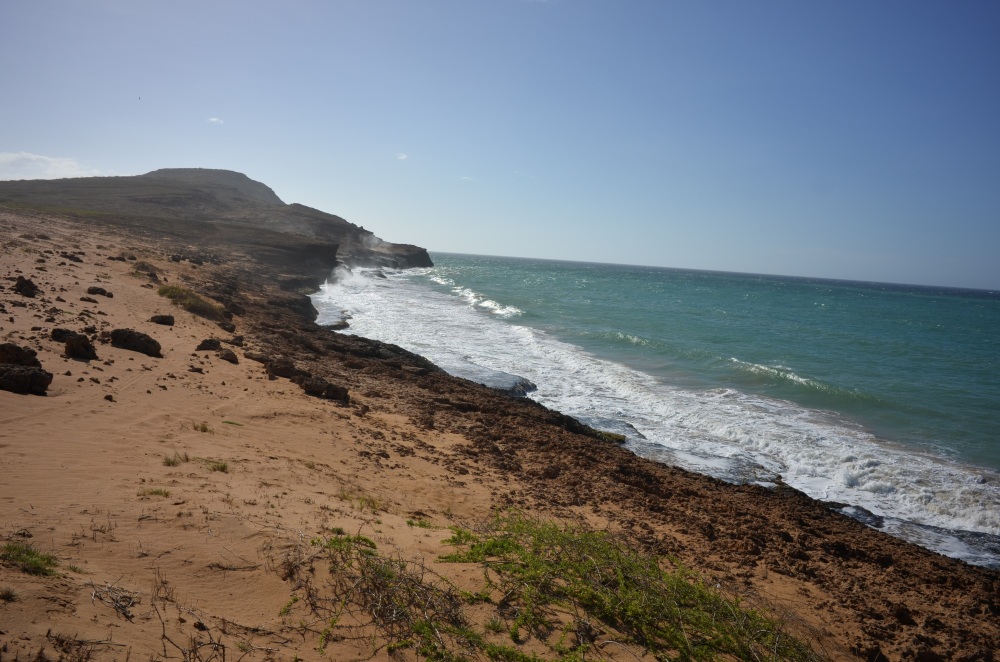
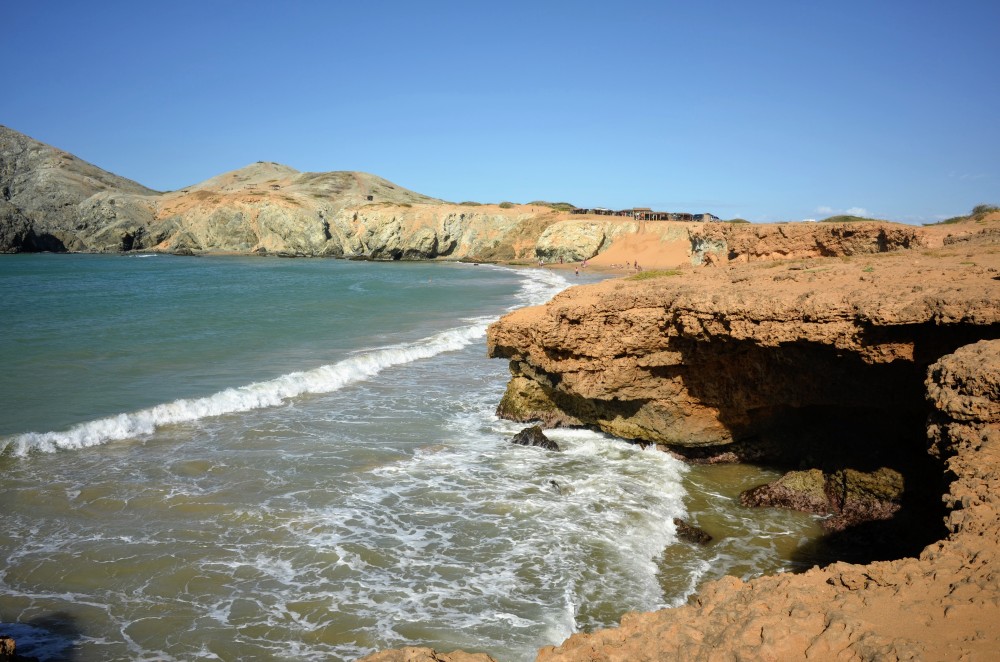
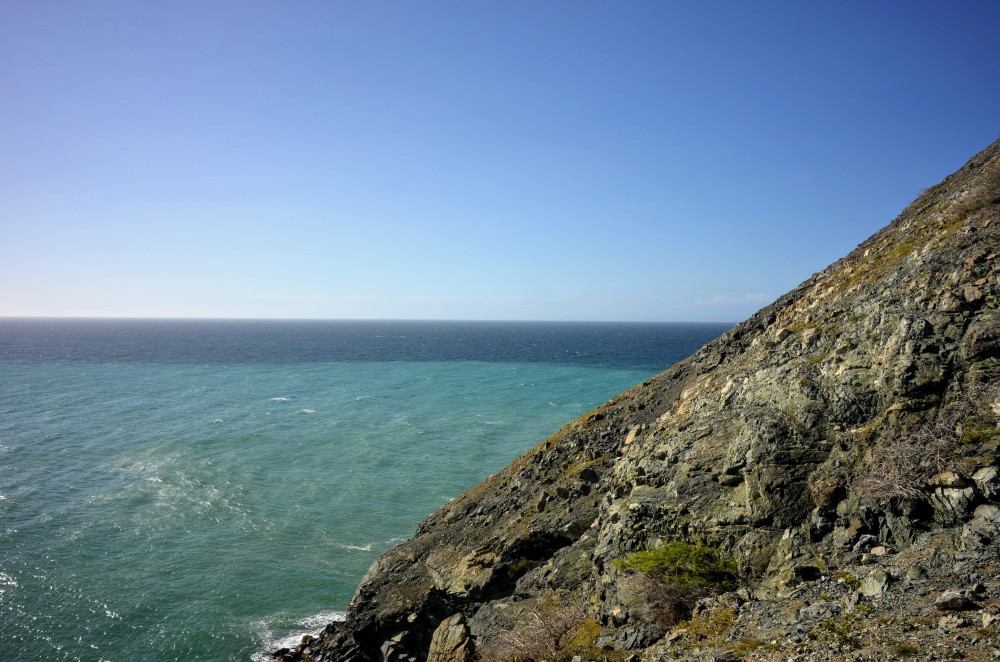
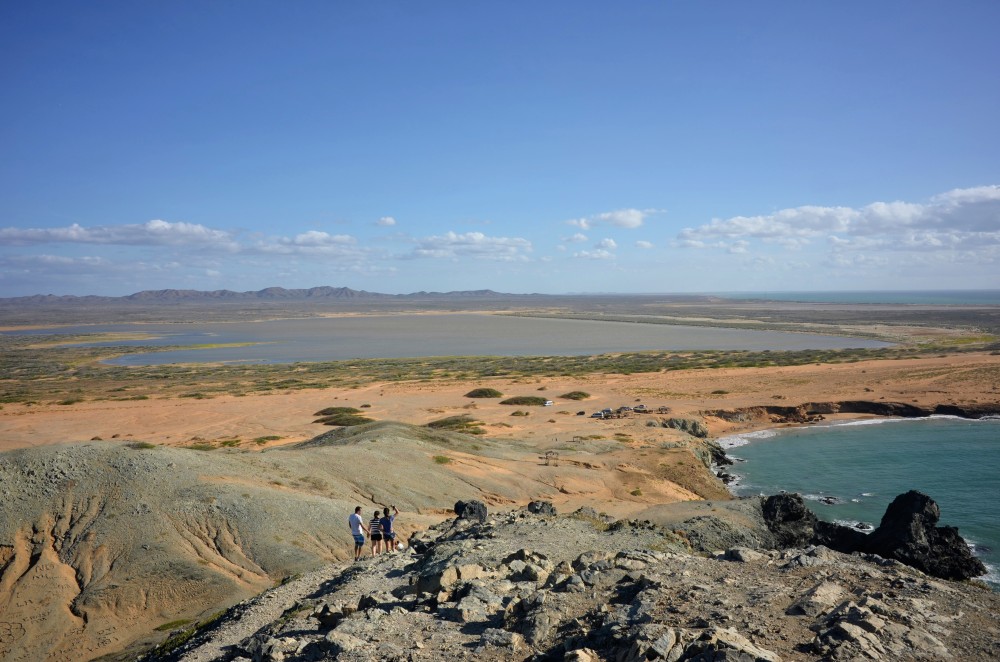
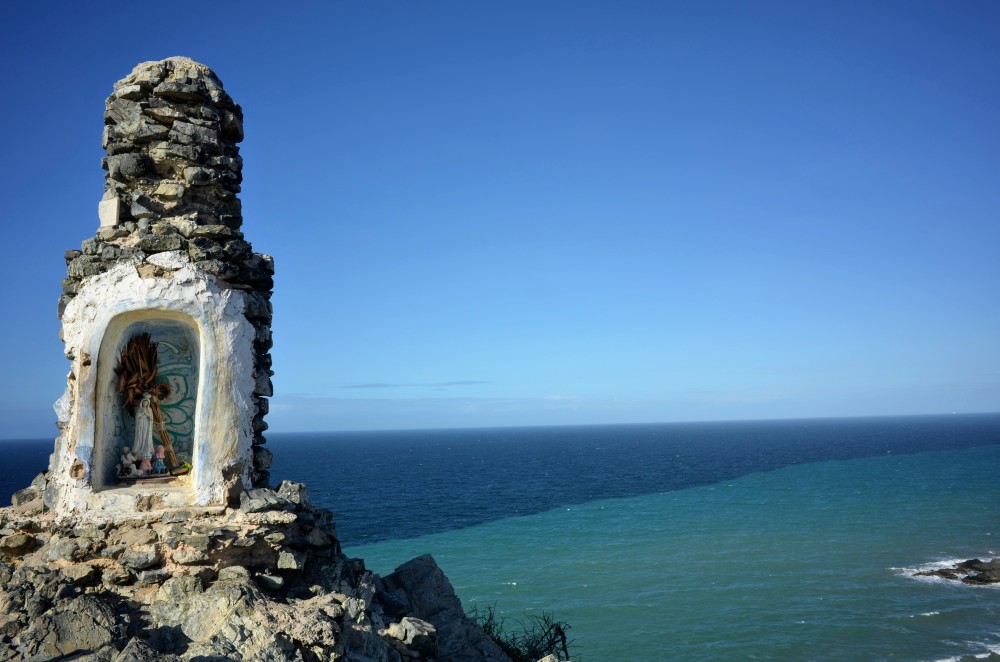
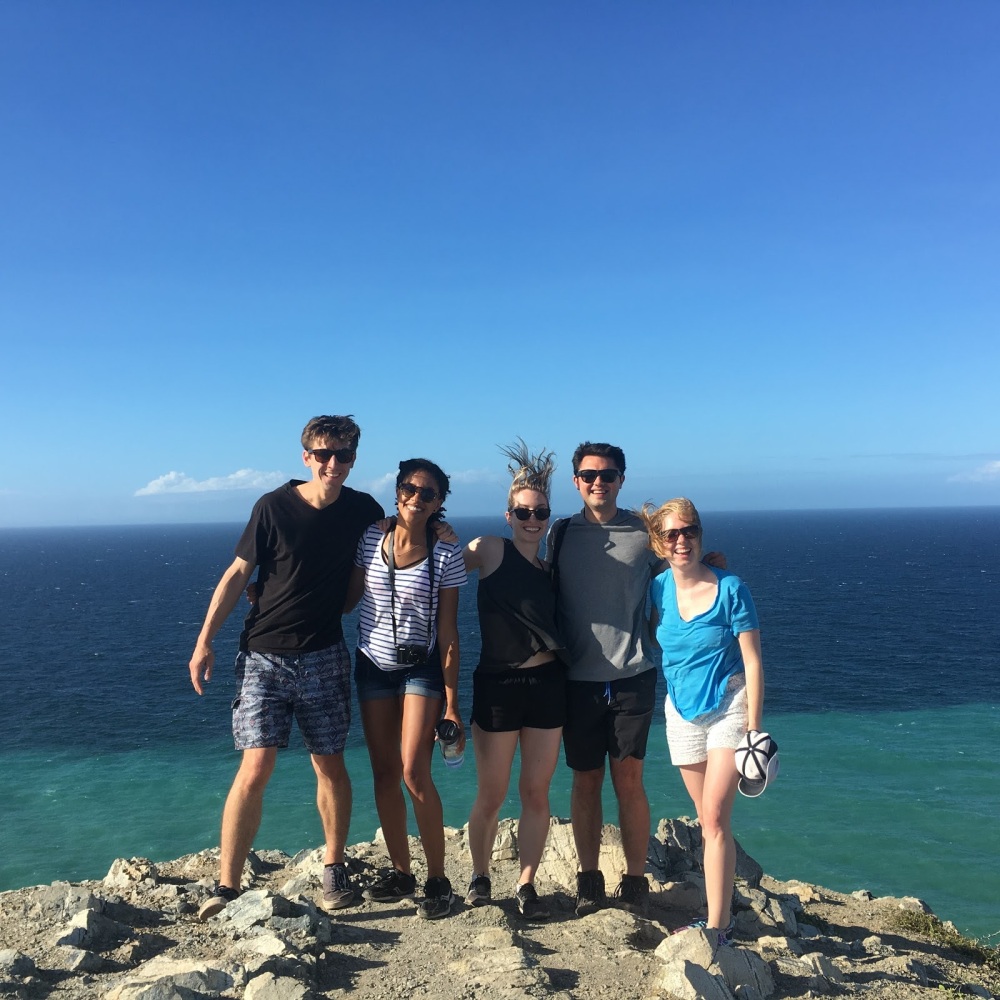
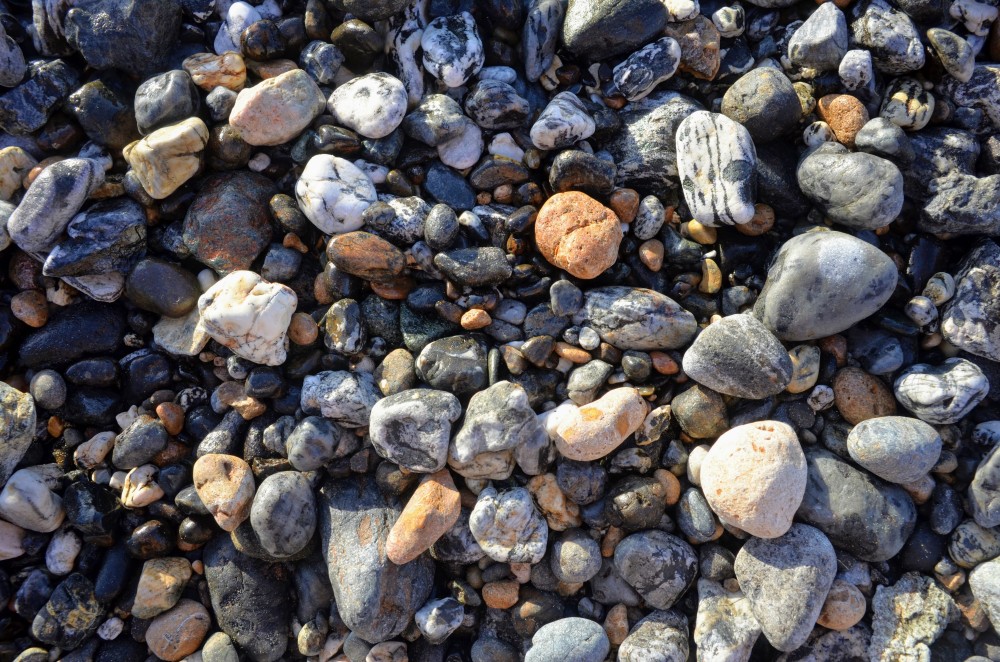
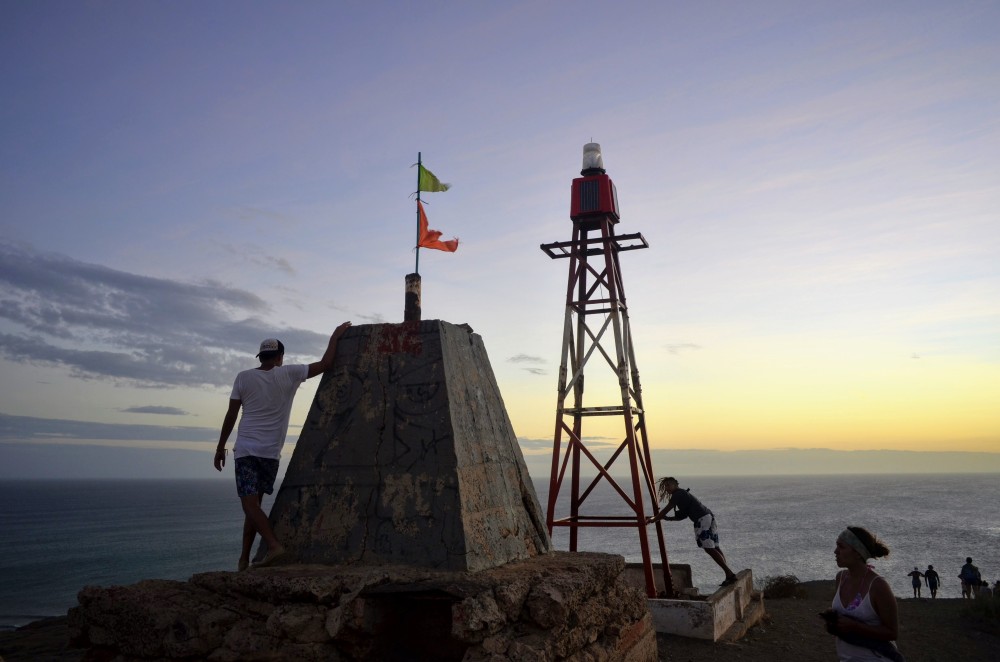
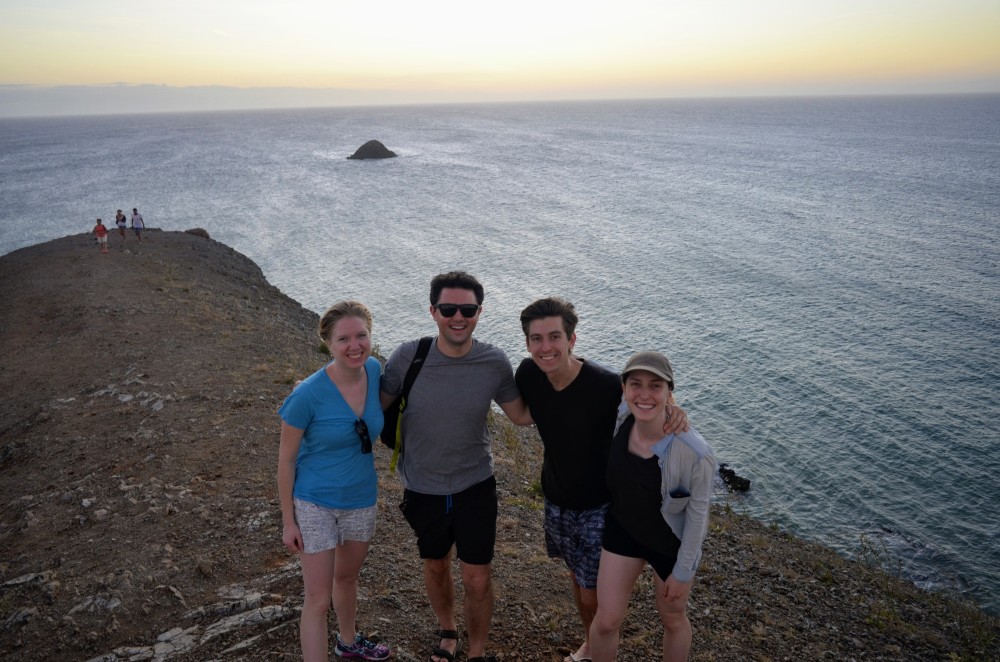
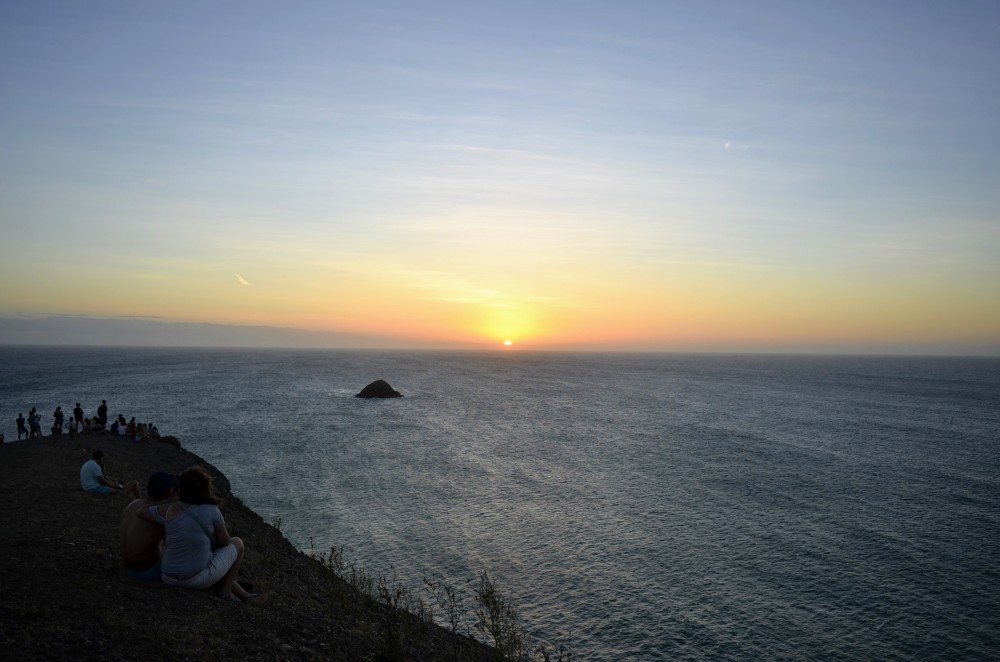
Day #3
It was the next day, making our way from Cabo de la Vela to Punta Gallinas (the northern most point in South America) that we became progressively more remote and encountered more and more children in need. I’m glad I went to La Guajira, but obviously this was not an enjoyable part of the trip. The disparity between haves and have nots was too great. And as a US citizen, with a passport that can take me to nearly every corner of the world, I felt so immensely privileged and disturbed by my own “wealth”. Wealth of opportunity, of experience. It weighed on everyone in our group. At one point, we stopped in Cabo de la Vela and I lowered the car window to give a kid with no shoes and few clothes some water. Our guide was understanding, but discouraged it, informing us that we hadn’t reached the really impoverished children yet.
We were astonished. How could this child with arms outstretched, no more than four years old, not be the neediest child we’d see that day? How could we drive past with our full bellies from breakfast? Luis let us know that here, in Cabo de la Vela, we were only a couple of hours from nearby towns and government aide; the children and families nearer to Punta Gallinas were about six hours by car from a large town and hardly ever saw government assistance. He suggested we wait for the more remote areas to give out our packs of water and snacks. We went against our initial feelings and waited until Luis gave us the go-ahead, and still needed to buy more water and snacks for the kids later in the trip, giving out over 100 packs of water and 100 snack packs over a 24 hour period.
This day wasn’t difficult solely because of the children we encountered, but also because our group was starting to drop like flies with stomach bugs and/or car sickness. Somehow, the terrain became even more rugged, which did nothing to ease everyone’s stomachs.
Still, we really enjoyed the day (hah or, in hindsight, maybe only some of us did?). After passing a bay, we ended up on some very cool sand dunes. It’s an interesting experience, being the only few people for miles and miles. Eventually, we made our way to Punta Gallinas for the sunset, and onto our lodging for the night.
It was really special looking at the stars from Punta Gallinas before the moon rose and obstructed our view. One of the perks of star-watching in Colombia is the ability to see constellations from both the Northern and Southern hemispheres. And one of the perks of star-watching on a remote peninsula, is the lack of light pollution and the flat landscape all around. I even saw my first satellite!
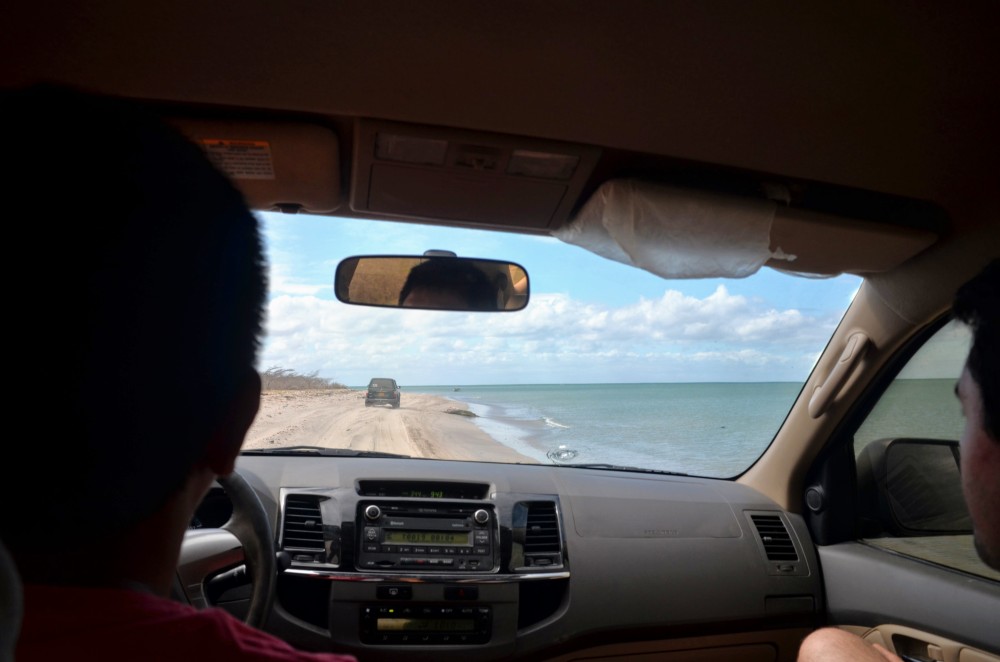
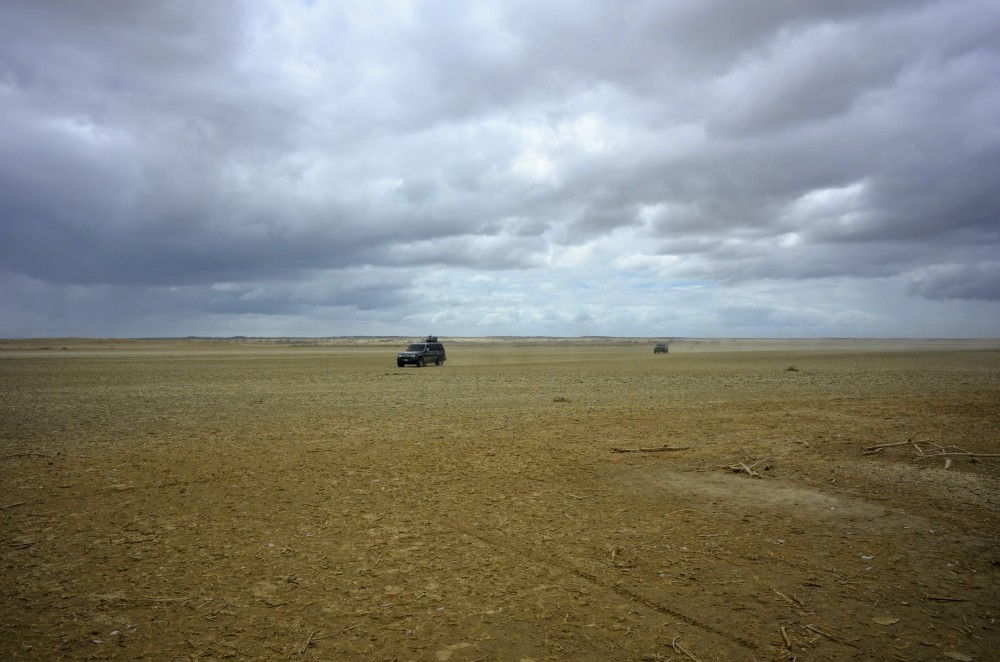
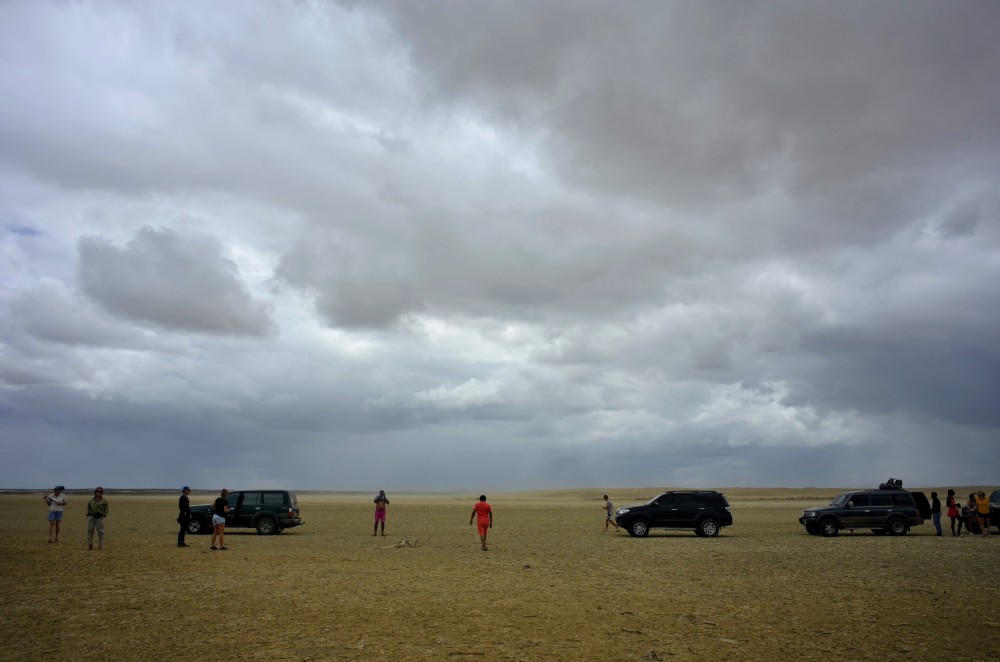
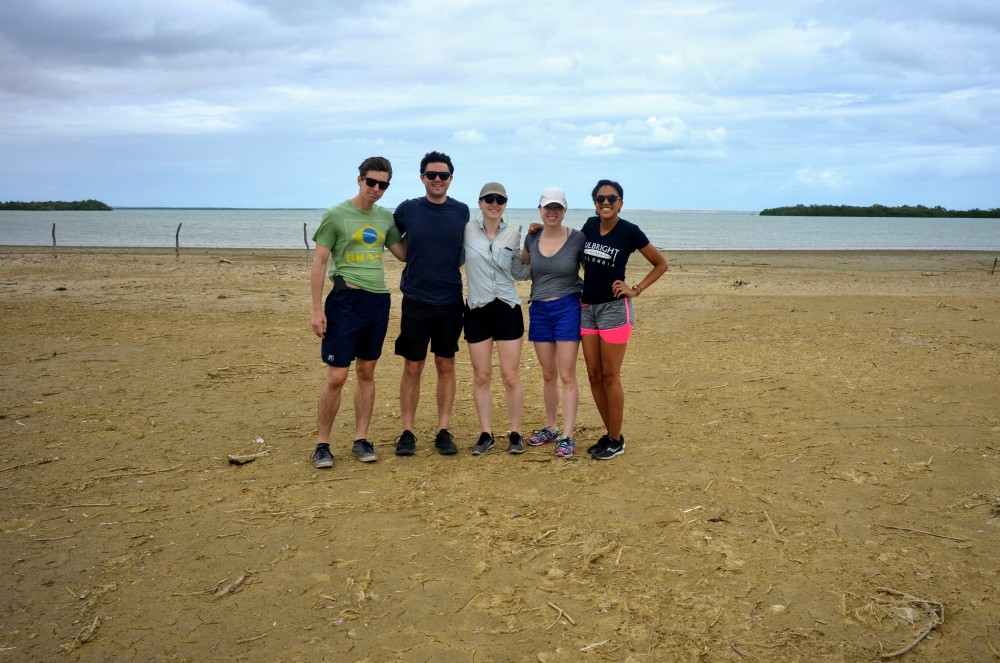
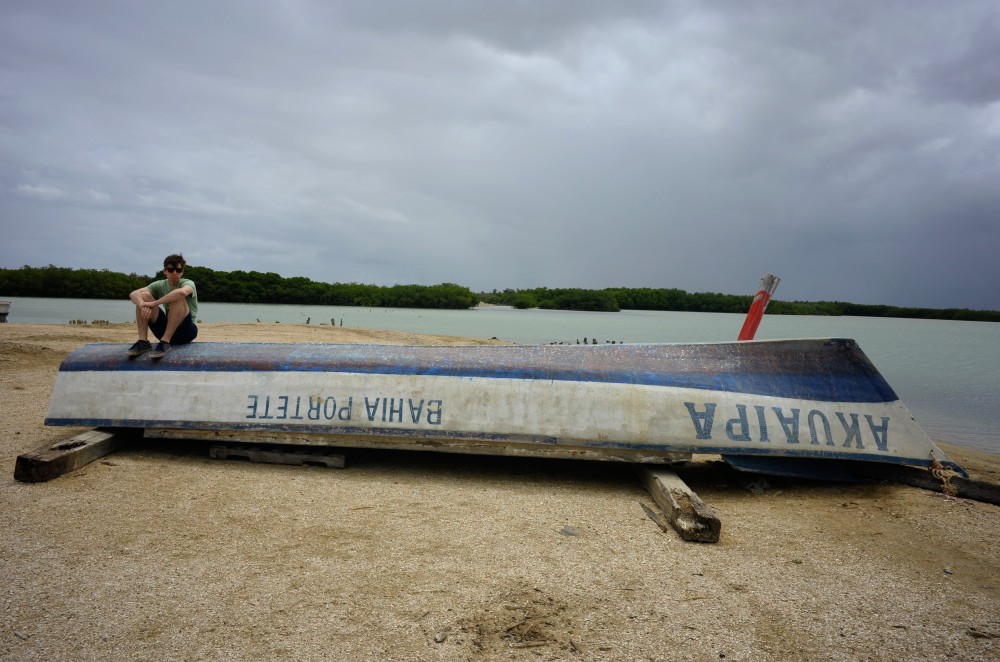
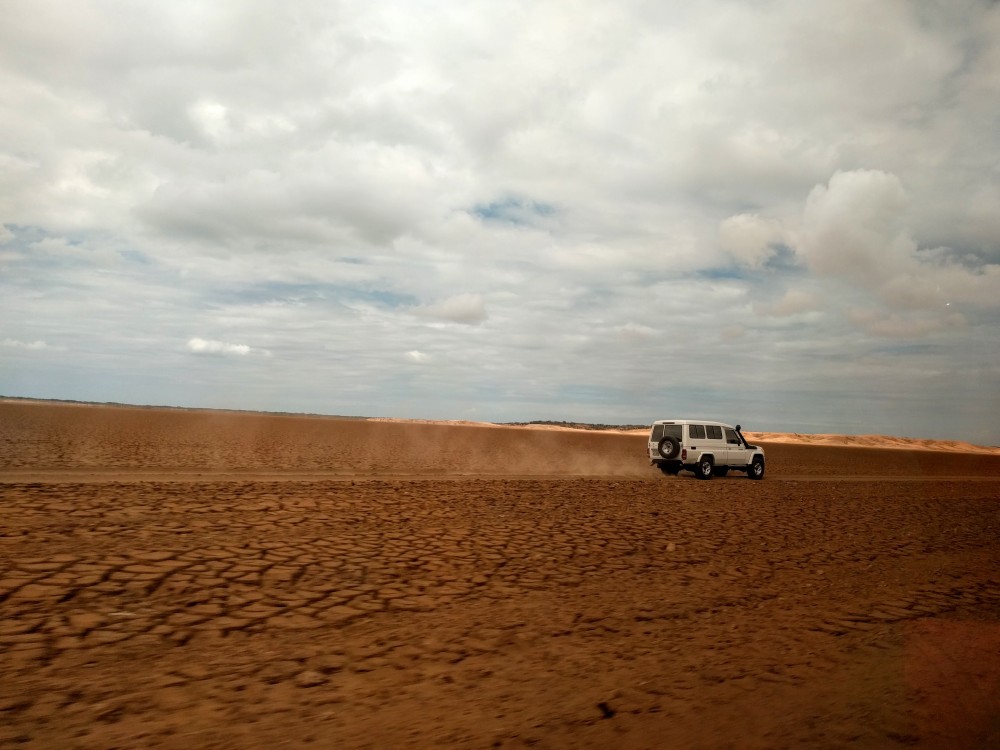
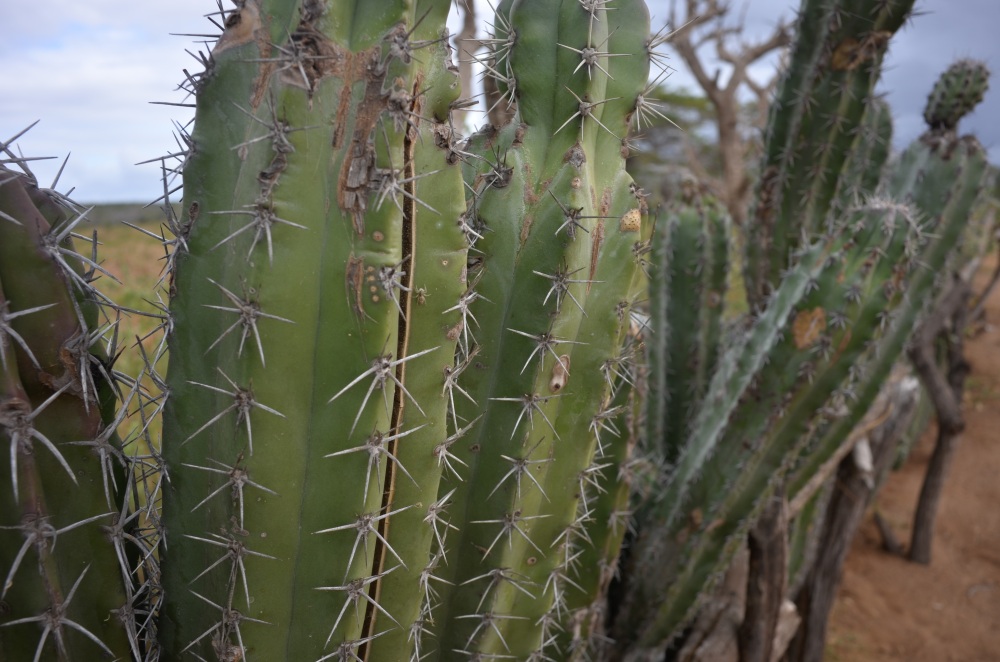
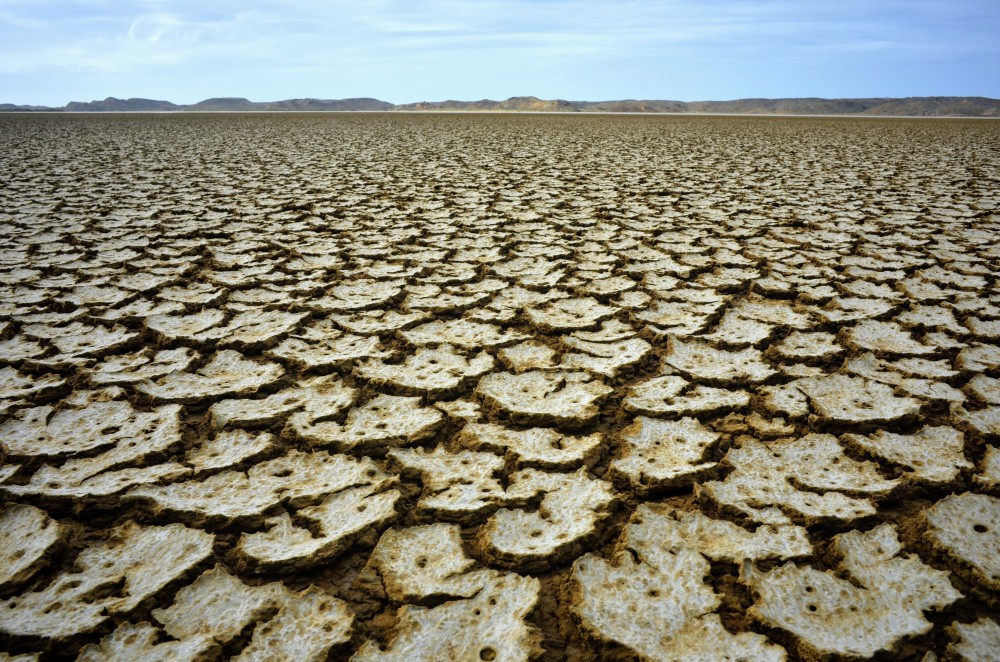
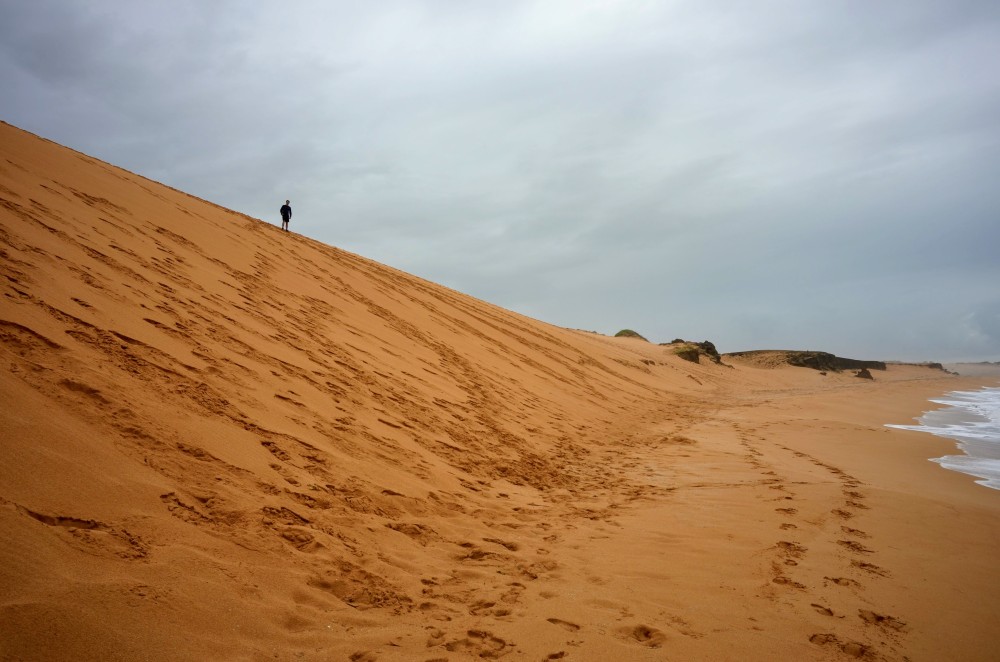
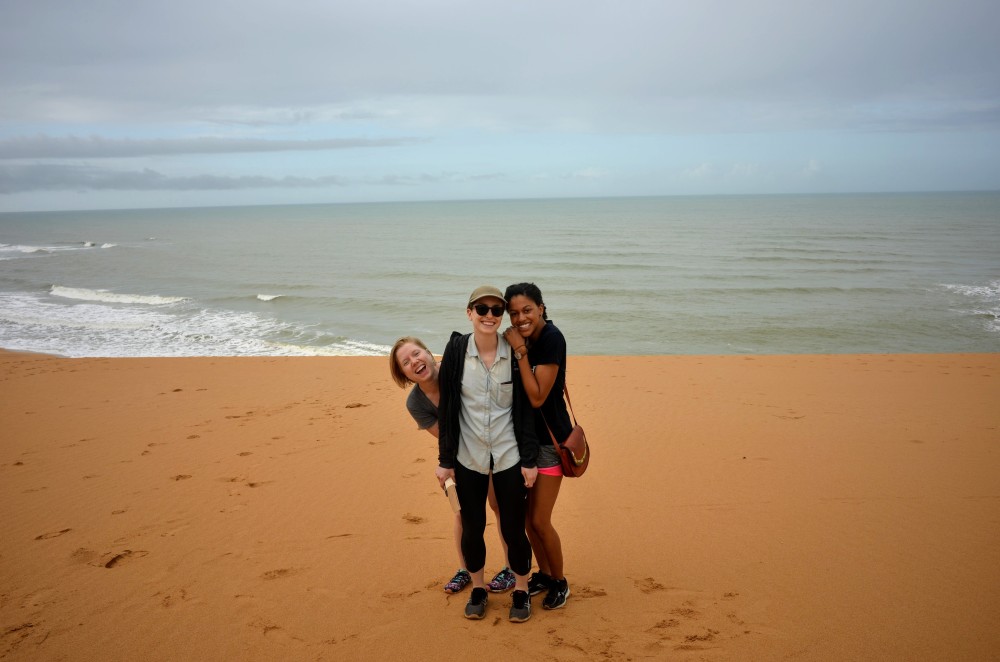
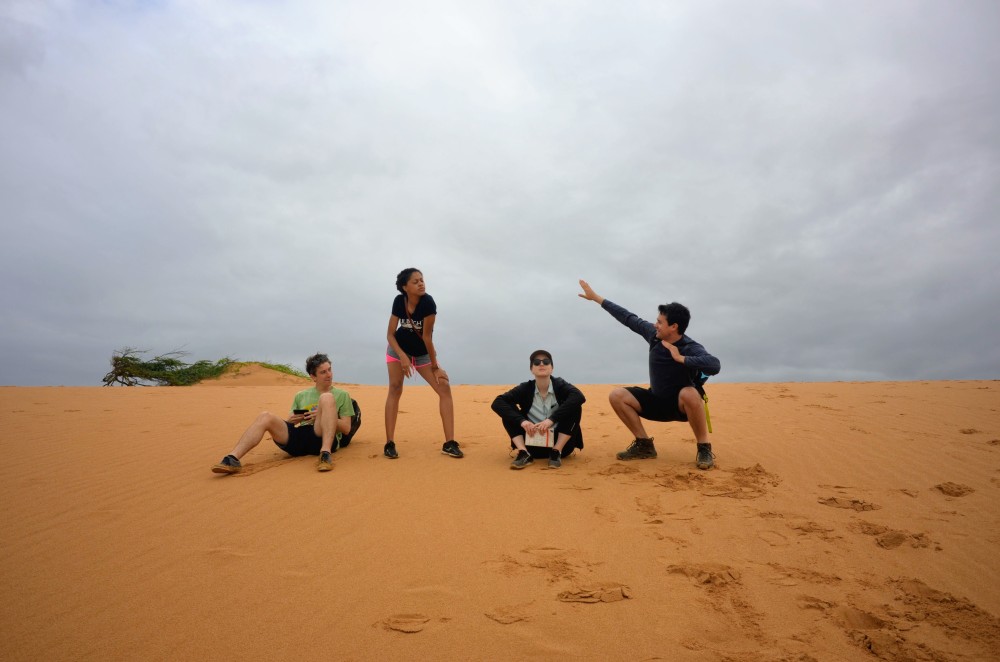
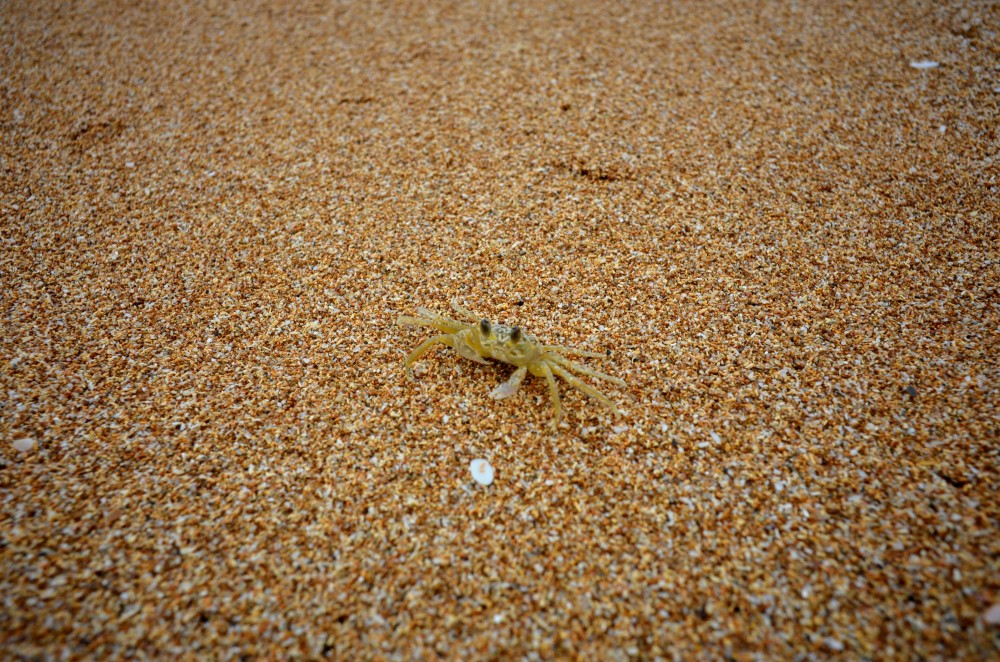
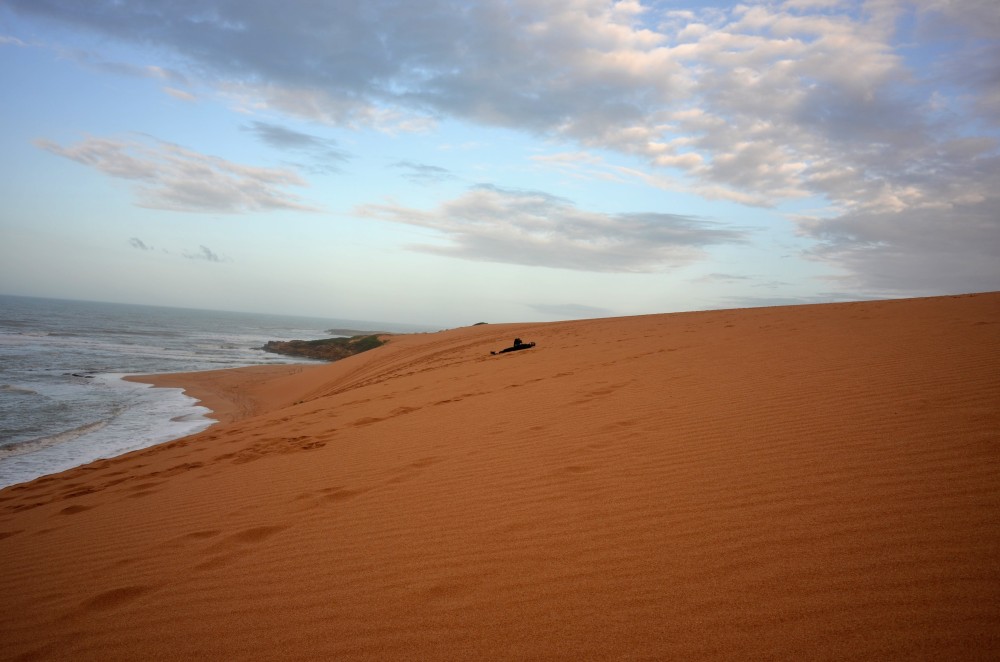
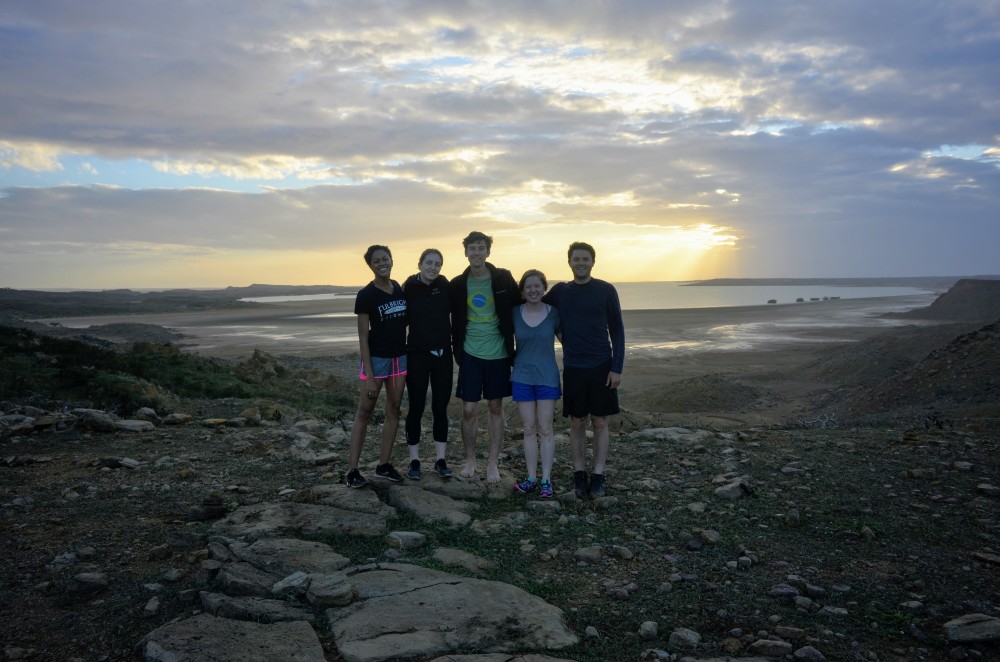
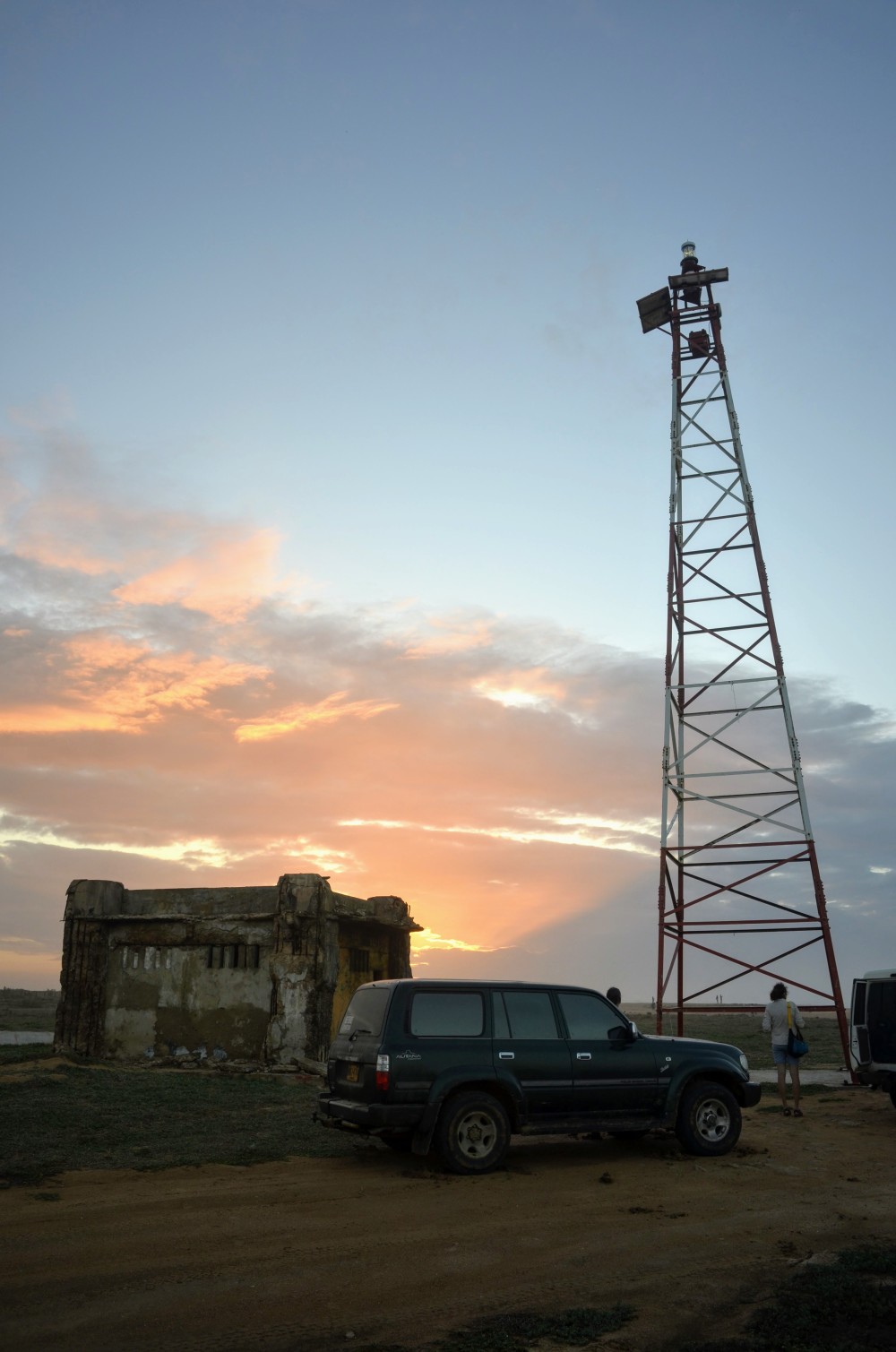
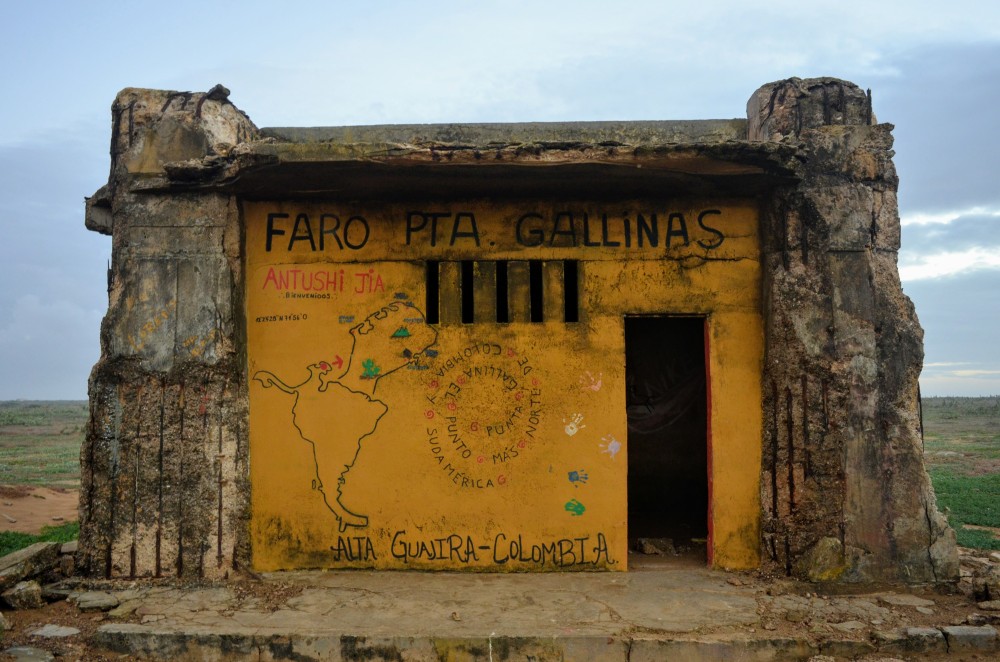
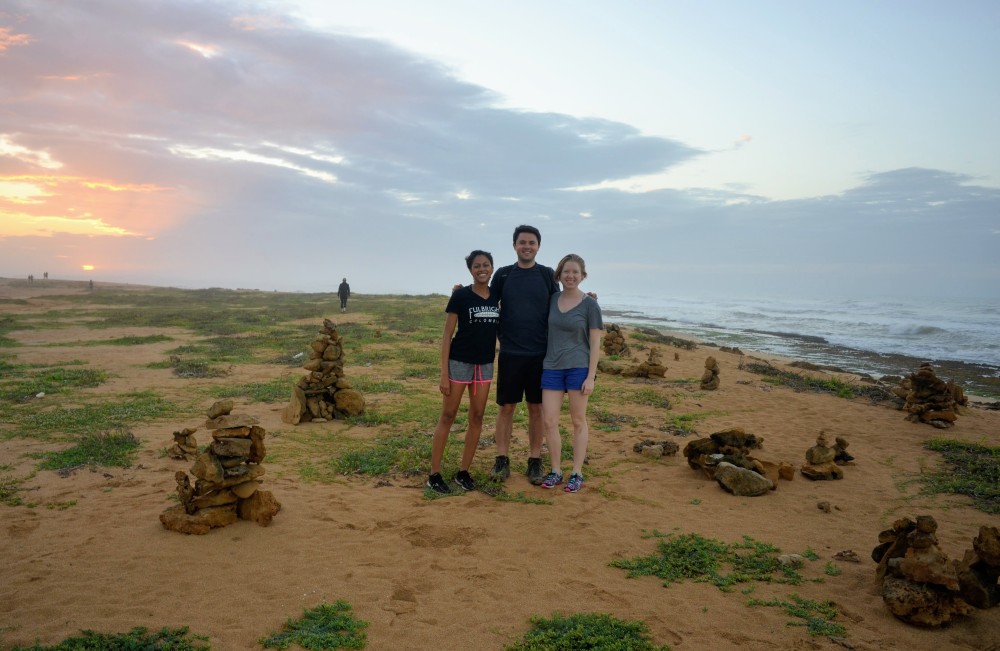
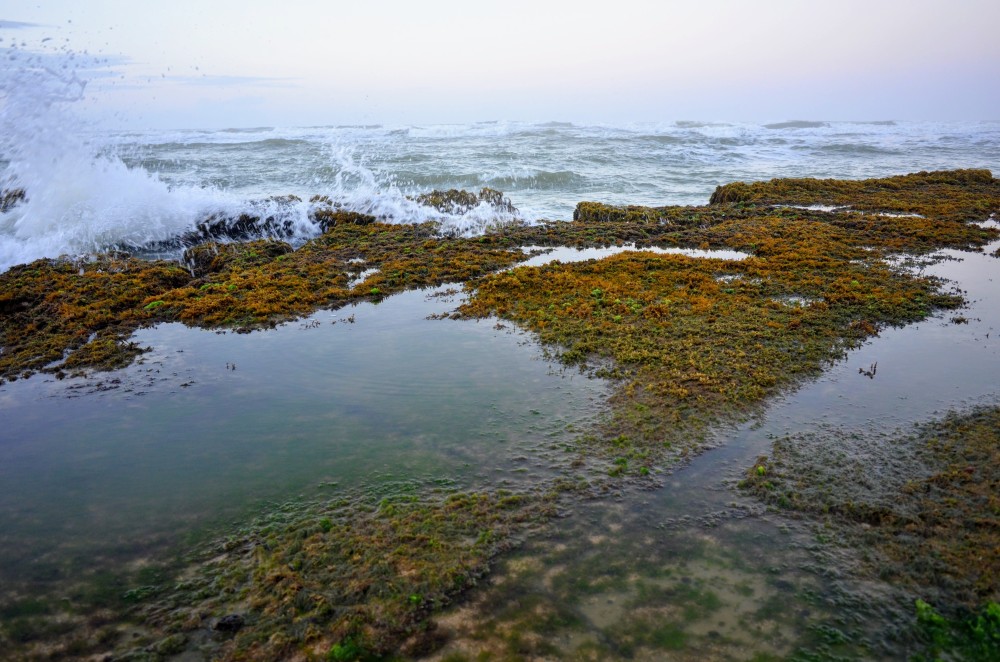
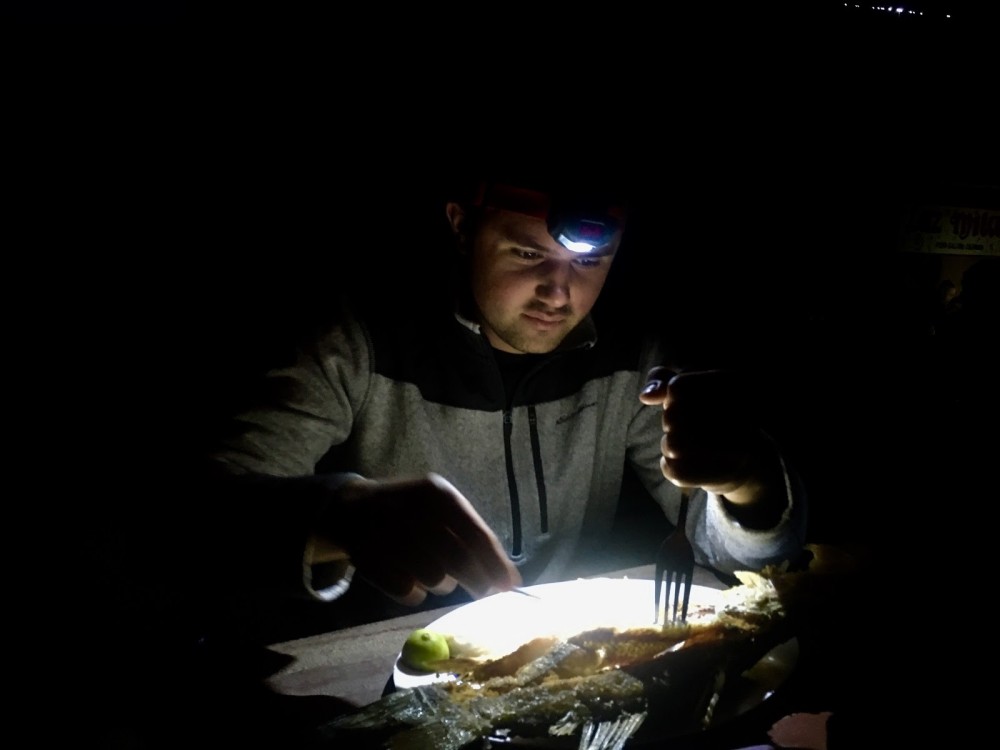
Day #4
After an interesting night’s rest (there was no door separating the beds from the room’s toilet…), we were a bit (very) stressed the next morning about making our way 6 hours south to the airport in Riohacha to catch our evening flight to Bogotá. Without roads or GPS signal, there’s no way of really knowing how long a trip will take.
Then, instead of hitting the road right after breakfast, we were loaded into a boat with other tourists for a quick water tour of the area. Once we got past worrying about catching our later flight, it was a really nice time. The trip was short and the water felt great.
Eventually, Luis came to pick us up on the beach where the boat had dropped us off with… a car that has clearly seen some better days. Not to be slowed by a few missing car parts, Luis grabbed some rope and tied our bumper(s) to the roof of the car, and off we went! With the exception of stopping for lunch back in Uribia, we headed straight to the airport and (fortunately) didn’t have too many issues with the roads- or, lack of roads.
Overall, it was a good trip. It was unlike anywhere I had been before, and I’m glad I got to experience it with the friends that I did. But, can’t say I’ll be dying to get back too soon.
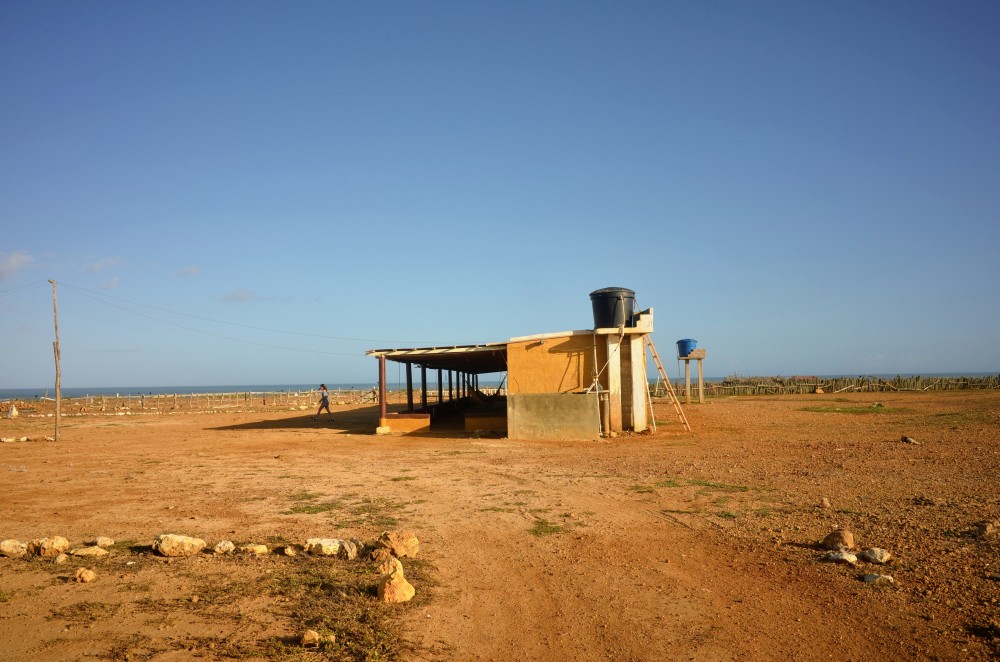
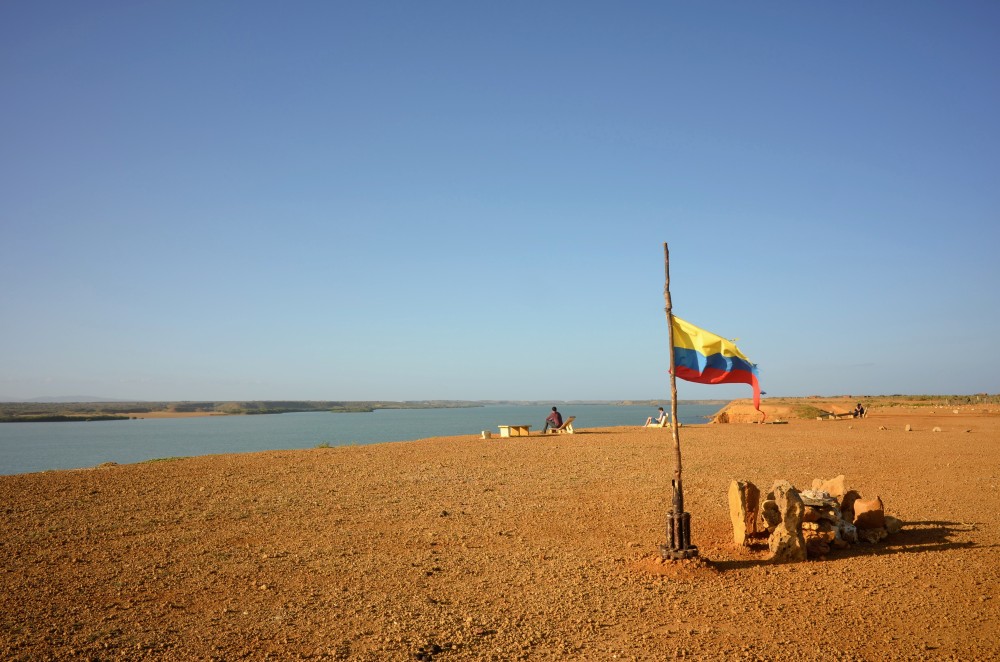
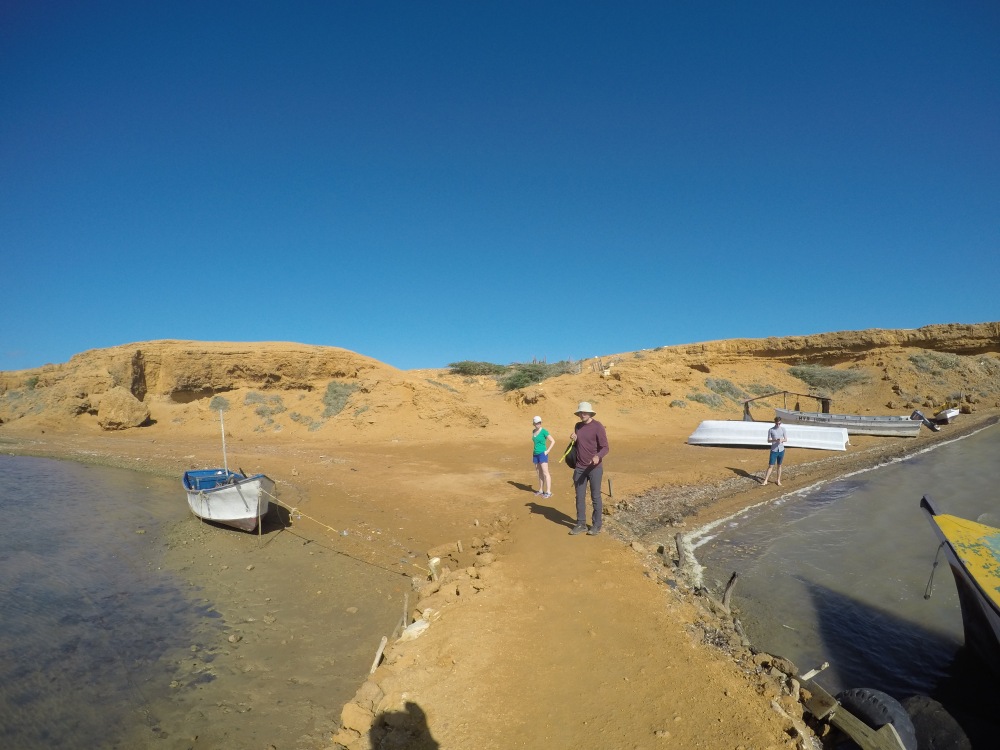
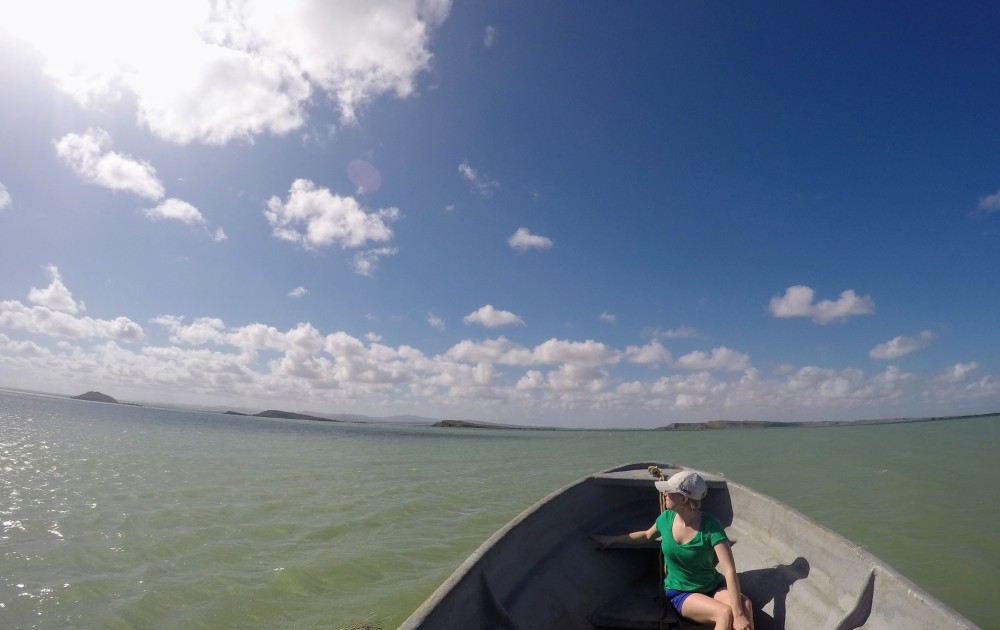
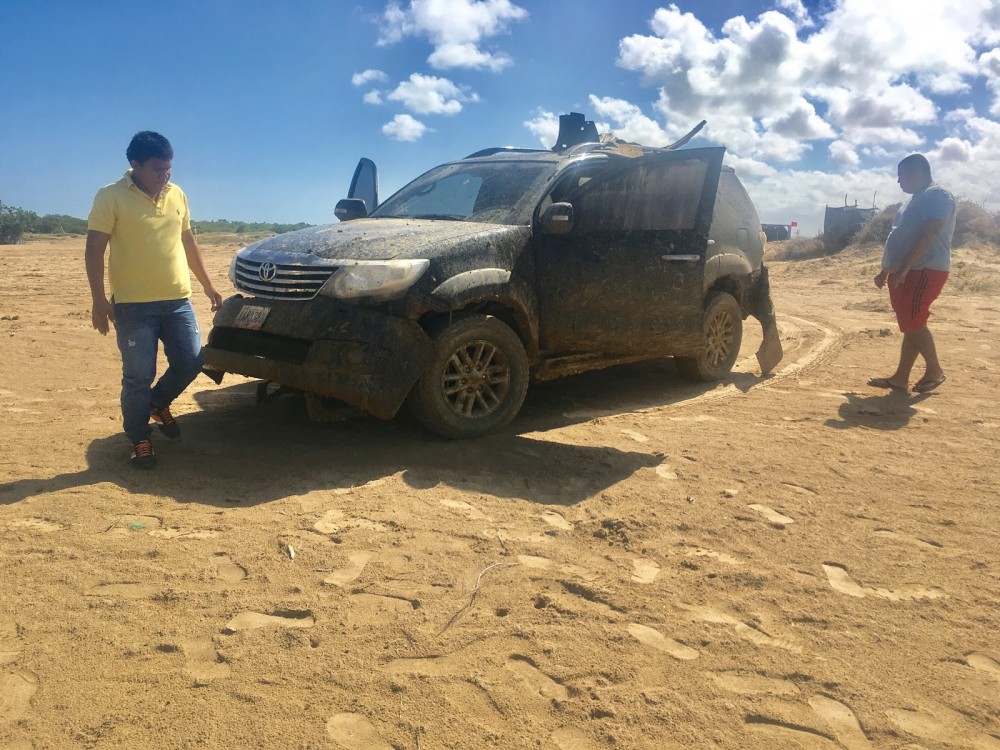
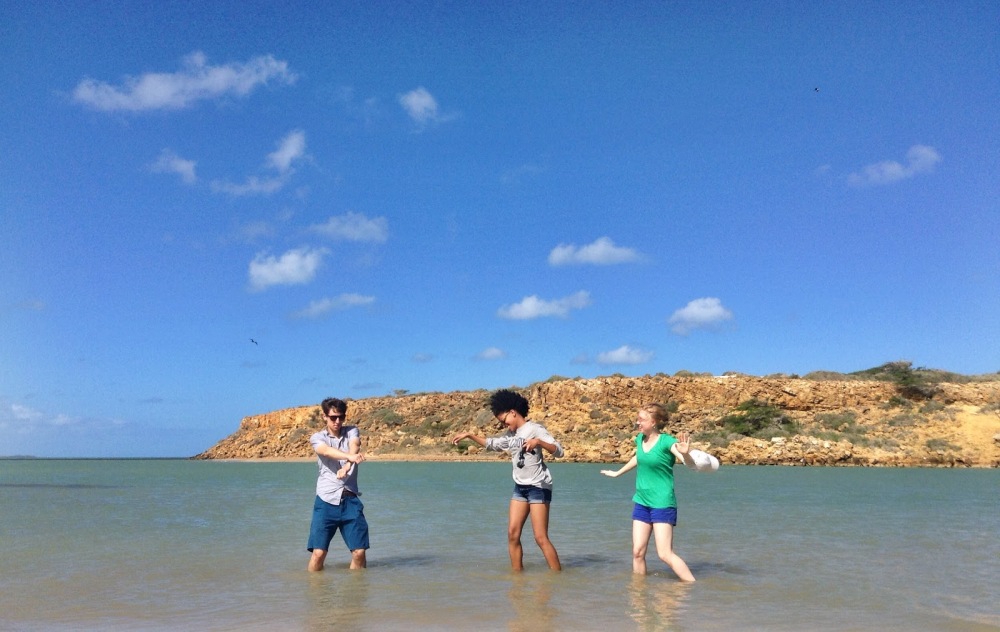
I love how in the one photo of you and the lil’uns, one has your hair stretched
LikeLike
Hah! I know. I’m sure they had never seen hair with such Slinky-like qualities
LikeLiked by 1 person
A time for firsts
LikeLike
Lauren, thanks for hosting Nathan. He had a wonderful time visiting you in Columbia. What a great blog. Nathan’s dad
LikeLiked by 1 person
Thank you! I felt so honored that Nathan wanted to include me and Colombia in his world travels.
LikeLike